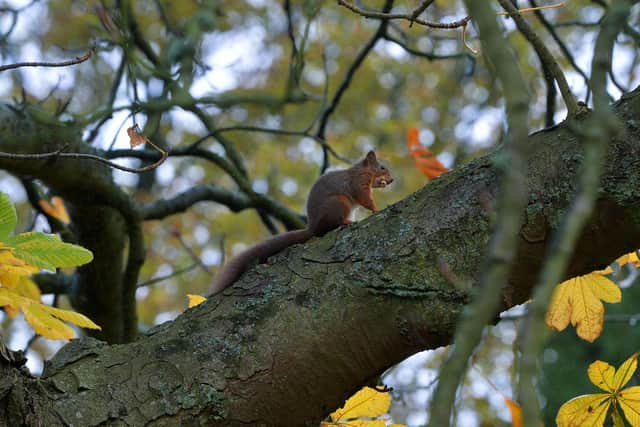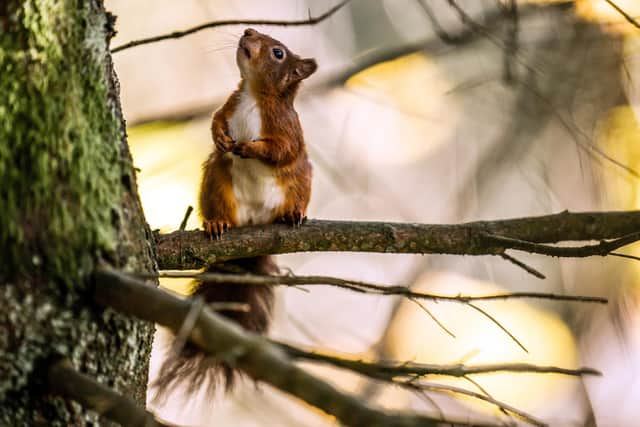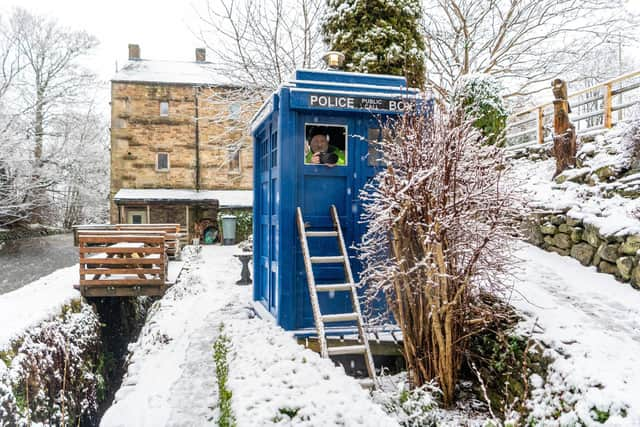Hopes red squirrels are beginning to spread in the Yorkshire Dales as sightings increase in Wensleydale
Sightings were first reported in significant numbers in the summer of 2020, when animals thought to have originated from the managed 'refuge area' at Snaizeholme in Wensleydale were spotted in Hawes, Askrigg, Bainbridge and Aysgarth.
Eighteen months and a further breeding season later, they appear to be tentatively thriving and are now being seen in places such as Hardraw Force.


Advertisement
Hide AdAdvertisement
Hide AdYorkshire Dales National Park Authority conservation officer Ian Court initially speculated that a bumper pine cone crop in 2020 had enabled the small Snaizeholme population - who are protected by a 'buffer zone' where grey squirrels are culled - to expand beyond the reserve. He now thinks that local residents' delighted response to their arrival has led to them depending on food left out for them in gardens, but has warned that their long-term survival in areas where grey squirrels also live is fragile.
He is encouraging residents and visitors to report and log sightings via the Red Squirrels Northern England website to enable a true picture of their numbers to be ascertained.
"It's very difficult to say definitively if numbers are increasing. In these areas there isn't a lot of native conifer cover, so the amount of natural habitat for them is quite low. We think they may be being sustained by feeding in gardens, but it's unclear how sustainable this will be in the long term.
"We are getting some extra records, and it's great that they're moving in. Within just the last two years, it could be just one squirrel hanging around a place, so ideally you need to monitor over 5-10 years and several generations, so you know that they can breed and the offspring have survived.


Advertisement
Hide AdAdvertisement
Hide Ad"There's a lot of excitement and enthusiasm about them and it can be easy to get carried away. Submitting sightings helps us to answer questions about whether numbers are being maintained."
Mr Court also warned people feeding red squirrels that they need to be careful their well-meaning actions do not bring the creatures into contact with non-native greys, who carry the squirrel pox virus.
"When the two mix it brings a whole host of issues. The greys carry pox, it is like a cold virus to them but it can decimate reds. If you have both visiting a feeder then it is easy for disease to spread.
"Relying on feeders is not necessarily a healthy diet for them - they need natural food too. And the risk is if one of these people moves away and the supply stops overnight."


Advertisement
Hide AdAdvertisement
Hide AdAs part of the Snaizeholme refuge area management, local landowners are given permission by the National Park Authority to control the grey squirrel population in a co-ordinated manner, and Mr Court believes individuals further afield could now also be exterminating greys to the benefit of reds.
"You need support and resource, and it needs to be co-ordinated to succeed. It's a long-term commitment and you have to be very thorough. You have to do it for the right reasons, and not just for a few years, or they will quickly return. It's a big commitment."
The owners of the Low Mill Guesthouse in Bainbridge have now erected feeders and a hide to encourage visitors to watch reds in the B&B's garden, and guests at The Green Dragon in Hardraw are now beginning to be attracted by regular appearances near the waterfall behind the pub. Mr Court realises the potential for tourism to be built around the animals' presence as it has been in the Lake District, and there are active monitoring groups protecting populations on the Cumbrian edges of the National Park, at Mallerstang, Garsdale and Sedbergh, though there is no formal volunteer group in Wensleydale.
A report published this week by the Yorkshire Dales National Park Authority has concluded that the red squirrel populations have 'maintained' their range and may well have extended it since 2012.
Advertisement
Hide AdAdvertisement
Hide Ad"People will come into the area to see them and that adds great economic value. It's brilliant for tourism.
"We just need to build up a picture so we have all of our records in one place. If you've had them visiting your bird table for the past three years, don't assume we already know about it!"
Submit sightings at https://rsne.org/
